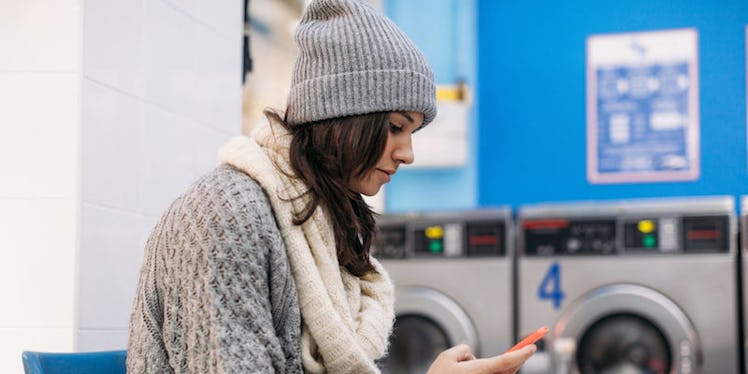Most people do what they can remember to do to reduce their environmental impact.
We turn off the faucet when we brush our teeth, we recycle our water bottles and extra paper. We turn off the lights when we leave the room.
Some everyday practices are more harmful to the environment than they seem.
Of course, everything is OK in moderation, but even those things done in moderation can add up over time and have a negative impact.
Here are seven things you do every week -- if not every day -- that pose a threat to the environment without you even realizing:
1. Washing your face.
Researchers are calling plastic exfoliating microbeads, often found in face washes, a serious environmental problem.
Since the beads are so small, they are not filtered during sewage treatment. As a result, they are swallowed by fish and other marine animals.
Last year, researchers found 1,500 to 1.7 million plastic particles per square mile in the Great Lakes.
California just joined Colorado, Illinois, Indiana, Maine, Maryland and New Jersey in banning the use of microbeads.
The beads can also be terrible for your skin.
They help cleanse pores, but they tear skin if used too roughly.
If you love the feeling of microbeads, there are some natural alternatives that use ingredients, such as oatmeal, that will do much less long-term damage to both your skin and the world's water.
2. Washing your clothes.
Chlorine bleach poses huge risks for the environment.
Once chlorine reaches open water, it reacts with minerals in the ocean to form dangerous toxins that take years to disintegrate. It also sickens marine life. Even low levels of chlorine in a water system leads to long-term health concerns for fish and bird populations.
Try washing your clothes with do-it-yourself (DIY) natural bleach alternatives.
Adding a half cup of baking soda to your detergent will boost cleaning power.
You can also use oxygen based bleach, which is more gentle on the environment.
3. Grocery shopping.
Hardly anything you can buy at the store is free of plastic or paper.
Food packaging accounts for most household trash and waste. Every year, enough Capri Sun pouches are landfilled or littered to wrap around the Earth five times.
And that’s only one product.
There are a couple of things you can do to reduce your environmental impact through packaging.
Try to buy locally, and look for products with minimal or recycled packaging.
Skip the water bottles, and use common sense.
4. Eating Asian takeout.
Disposable chopsticks -- inside and outside of restaurants -- contribute to an astounding amount of tree cutting in China and the United States.
The use of chopsticks is only increasing in both countries.
In 2011, the New York Times reported that the chopstick industry destroyed around 3.8 million trees in China alone.
Invest in a pair of reusable chopsticks for your late night sushi orders, and save a couple trees in the process.
5. Charging your computer overnight.
Charging all of your electronics overnight sucks up more power than needed.
Assuming you leave your chargers plugged in throughout the day and plug your electronics in at night, you use up energy that isn’t directed toward the charging of your device at all.
Researchers have concluded that the amount of energy wasted with charging electronics overnight, per year, isn’t much in the grand scheme.
But, if you are on a budget and looking to decrease your environmental footprint, unplugging will save you a couple bucks a month and a few watts of energy per year.
6. Throwing your ink and batteries out.
We throw whatever we don’t need in the trash, but there are some things that don’t belong in landfills.
Household batteries contain trace amounts of mercury and toxic chemicals that damage wildlife and sea life when they accumulate and leak into ecosystems around the world.
Recycling batteries is easy and more environmentally conscious.
Ink cartridges have an even more toxic effect on the environment when they are disposed of improperly.
A staggering 10 million cartridges end up in landfills every year.
Wildlife mistakes the plastic for food, and the ink poisons soil, so do the animals of the world a favor and send your cartridges to recycling facilities.
7. Buying jeans
On average, a pair of jeans is made using 2,900 gallons of water.
That’s more than 130 average showers worth of water.
Water availability and waste is a huge environmental issue globally.
When you can, recycle, donate or repurpose your jeans.
I bet you never realized that something as simple as a pair of jeans could be hurting the planet, but it's true!
Taking note of the little things that cause big damage in the long-run is a slow, but steady way of doing your part in protecting our planet.
